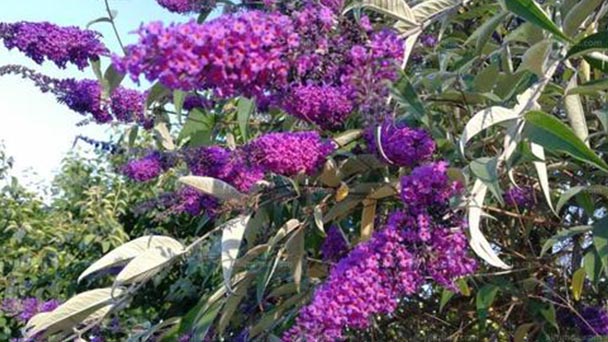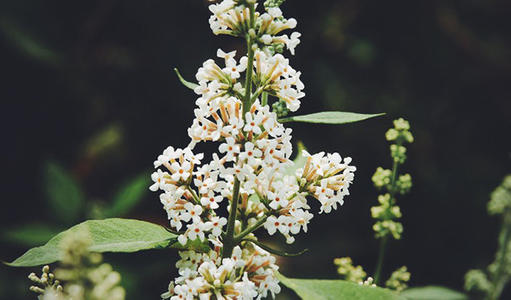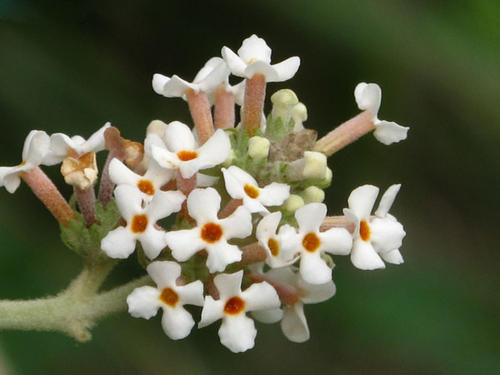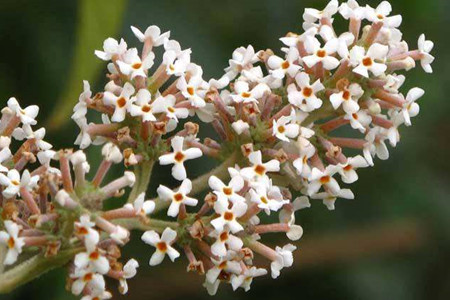Pole butterfly bush profile
Written by Maggie
Jan 15 2021

Pole Butterfly Bush, scientific name Buddleja officinalis, is 1-4 m tall. Branchlets are slightly tetragonal, grayish-brown; Branchlets, undersides of leaves, petioles, and inflorescences are densely covered with grayish-white starlike tomentose. They are the dry flowers or buds of Pole Butterfly Bush. Pole Butterfly Bush has the function of dispelling wind, cooling blood, moistening liver and improving eyesight.
Pole Butterfly Bush picture

Pole Butterfly Bush morphological characteristics
Pole Butterfly Bush (Buddleja officinalis) is a deciduous shrub, with a height of 1 ~ 3m and a maximum of more than 6m. Branchlets are tetragnatha, densely covered with gray-white tomentose, then gradually glabrescent. Leaves are opposite, petiole 6 ~ 10mm long, gray tomentose; Stipules are degenerate into a horizontal line between the bases of two petioles; Leaf blade is oblong-lanceolate, broadly lanceolate or linear-lanceolate, 5 -- 12cm long, 1 -- 4.5cm wide, apex acuminate, base cuneate or broadly cuneate, entire or inconspicuous sparsely serrated, papery, dark green above, covered with fine stellate hairs, veins concave, densely covered with grayish or yellow stellate hairs below, veins raised.
Pole Butterfly Bush origin
Pole Butterfly Bush (Buddleja officinalis) is distributed in Shaanxi, Gansu, Hubei, Hunan, Guangdong, Guangxi, Sichuan, Guizhou, Yunnan and other provinces and regions.
Pole Butterfly Bush growth habit
Pole Butterfly Bush (Buddleja officinalis) likes warm, wet conditions. It is suitable for its growth when the temperature is 25℃. pole butterfly Bush is slightly cold resistant, avoiding water. The soil requirements are not strict. The general soil can be cultivated.

The propagation of the Pole butterfly bush
Pole Butterfly Bush (Buddleja officinalis) is commonly propagated by sowing and division.
Sowing propagation
In spring, autumn, the use of seeds picked in the whole good seedbed, rake flat, the seeds into the soil 2 ~ 3 cm, can also be ditched drill, row distance of 30 cm, ditch depth of 3 cm, 10 cm, 1 kg per mu of sowing amount. When sowing seeds, mix with wood ash, and then evenly spread into the ditch, and then cover with a layer of wood ash, keep the soil moist, shade or cover with grass.In case of drought. It is necessary to spray and water the soil thoroughly. When the height of the seedlings is about 10 centimeters, remove the shade shed and thin the seedlings. Generally, the distance between the plants is 15 centimeters. When the seedling height of 100 cm for field transplanting, according to the plant spacing L meters, row spacing of 2 meters dig hole planting, hole depth of 30 cm, each hole 1 plant, cover soil pressure, watering, apply sufficient bottom fertilizer.
Division propagtion
Due to the strong germination force of Pole butterfly bush roots, plants generally grow in clusters. During transplanting, 1 plant can be divided into 2 or 3 plants for transplanting. Plant the Pole Butterfly Bush at a spacing of 1 m and row spacing of 2 m.
Diseases control of Pole butterfly bush
Pole Butterfly Bush (Buddleja officinalis) has few pests and diseases, mainly red spider: damage to young leaves and buds. Prevention and control methods: It can be sprayed with 20% acaricidal wet powder 700 ~ 800 times liquid, and it can also be used in the stem and leaf decoction of sophora flavescens, plus lime spraying.
Main value of Pole Butterfly Bush
Medicinal properties of Pole butterfly bush
Pole Butterfly Bush (Buddleja officinalis) is used as a medicine for dried flowers or buds. It has a sweet taste, slightly cold, and is non-toxic. It has the effect of dispelling wind, cooling blood, moistening liver and improving eyesight. It is mainly used to treat the symptoms of red eyes, swelling and pain, rotten eyes, tears and shame, congestion, pain, swelling, lacrimation and confusion, as a special ophthalmic drug, used mostly with Congestion grass and cicada sloughy for clouding the eyes, long-term vision weakness or blindness, generally accompanied by chrysanthemum and wolfberry fruit, congestion, lacrimation, lacrimation, lacrimation, lacrimation, lacrimation, lacrimation, swelling and itching of the eye. It is often used with mulberry leaf and chrysanthemum.
The edible value of Pole butterfly bush
Pole Butterfly Bush (Buddleja officinalis) has a variety of edible methods and is beneficial to human health. Regular drinking of Pole Butterfly Bush tea is conducive to clearing the liver and relieving heat, and retreating the eye. It can also be combined with peach kernel, medlar and grain essence to make Pole Butterfly Bush Ming Ming Soup, which can protect and improve vision, improve eyesight and improve the eyes, and improve red eyes, tears, blurred vision, fear of light and other symptoms. Pole Butterfly Bush is also very tasty.

Latest Updated
- Benefits of Bugleweed - 7 Science-backed Health Benefits
- Bugleweed Dangers & Side Effects - Is It Poisonous?
- How to Plant Evergreen Trees - What You Should Know
- When to Plant Evergreens - Grow Guide for Evergreen Trees
- 12 Wonderful Evergreen Shrubs for Your Garden
- 12 Popular Evergreen Plants with Pictures for Beginners
- When And How To Prune A Lilac Bush Like a Pro
- How to Grow & Care for Lilac Vine (Hardenbergia Violacea)
- Japanese Lilac Tree (Syringa Reticulata) Care & Propagation Guide
- Shumard Oak Pros and Cons - What to Know
Popular Articles
- Winter maintenance of Antirrhinum Majus
- How to Grow Terminalia Mantaly Tree
- How to Grow and Care for Crossostephium Chinense
- How to grow Antirrhinum Majus in spring
- Peristeria Elata (Dove Orchid) Profile: Info & Care Guide
- Underwatered Snake Plant (Sansevieria Trifasciata) - Signs And How To Fix
- How to Care for Brazilian Jasmine Plant (Mandevilla Sanderi)
- How to Grow & Care for Graptopetalum Purple Delight in Summer
- Rosa Chinensis (China Rose): Plant Growing & Care Tips
- How to Care for Baby Sun Rose (Aptenia Cordifolia)